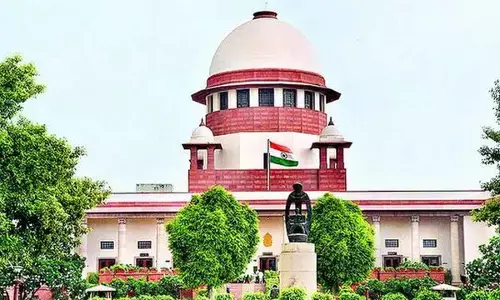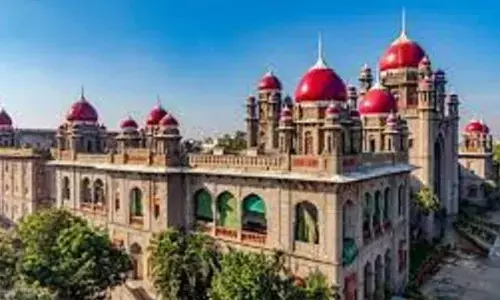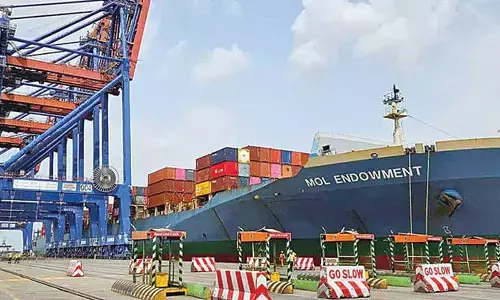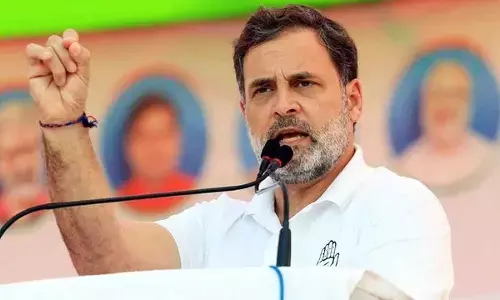Is India’s poverty reduction story true?

While the budget highlighted achievements, concerns remain about the depth and reach of poverty reduction efforts, especially given the challenges such as low GER, unequal opportunities
Union Finance Minister Nirmala Sitharaman presented the Centre’s Interim Budget 2024-25 on February 1, 2024 in the Parliament. She began her speech stating that “the Indian economy has witnessed profound positive transformation in the last ten years. The people of India are looking ahead to the future with hope and optimism.” She also spoke about structural reforms, pro-people programmes, creating more opportunities for employment and entrepreneurship and the fruits of development started reaching the people at scale. The country got a new sense of purpose and hope, she said, also referring to the Centre’s ‘mantra’ of ‘Sabka Saath, Sabka Vikas, and Sabka Vishwas’ and how the government’s development philosophy has covered all elements of inclusivity - social inclusivity through coverage of all strata of the society, and geographical inclusivity through development of all regions of the country.
She said “the worries about food have been eliminated through free ration for 80 crore people. Minimum support prices for the product of ‘Annadata’ are periodically increased appropriately.” Talking about social justice, she said that “our government is working with an approach to development that is all-round, all-pervasive and all-inclusive. It covers all castes and people at all levels. We are working to make India a ‘Viksit Bharat’ by 2047. For achieve that goal, we need to improve people’s capability and empower them.” She reiterated the Centre’s resolve to focus on four major castes – poor, women, youth and farmers. “Their needs, their aspirations, and their welfare are our highest priority. The country progresses, when they progress. All four require and receive government support in their quest to better their lives. Their empowerment and well-being will drive the country forward,” she said.
The Finance Minister also revealed that “with the pursuit of ‘Sabka Ka Saath’ in these 10 years (2014-2924), the Government has assisted 25 crore people to get freedom from multidimensional poverty. ‘Direct Benefit Transfer’ of ` 34 lakh crore from the government using PM-Jan Dhan accounts has led to savings of Rs 2.7 lakh crore. PM-SVANidhi has provided credit assistance to 78 lakh street vendors. From that total, 2.3 lakh have received credit for the third time. Every year, under PM-KISAN SAMMAN Yojana, direct financial assistance is provided to 11.8 crore farmers, including marginal and small farmers. Crop insurance is given to four crore farmers under PM Fasal Bima Yojana. She also said that Electronic National Agriculture Market has integrated 1361 mandis, and is providing services to 1.8 crore farmers with a trading volume of Rs 3 lakh crore.
She said the Skill India Mission has trained 1.4 crore youth, upskilled and reskilled 54 lakh youth, and established 3000 new ITIs. A large number of new institutions of higher learning, namely, 7 IITs, 16 IIITs, 7 IIMs, 15 AIIMS and 390 universities have been set up. PM Mudra Yojana has sanctioned 43 crore loans aggregating to Rs 22.5 lakh crore for entrepreneurial aspirations of our youth. Besides that, Fund of Funds, Startup India, and Startup credit guarantee schemes are assisting our youth. Thirty crore Mudra Yojana loans have been given to women entrepreneurs. Female enrolment in higher education has gone up by twenty-eight per cent in ten years. In STEM courses, girls and women constitute forty-three per cent of enrolment - one of the highest in the world, she said, adding ‘people are living better and earning better, with even greater aspirations for the future. Average real income of the people has increased by 50 per cent.”
None should question the intent of the government either at the Centre or in the State. Since 1947, India has witnessed remarkable development braving all socio-economic and political odds. Even now our challenges are intact. Union Minister of State for Health and Family Welfare Dr Bharati Pravin Pawar, while speaking at the inaugural function of ‘Health of Youth – Wealth of Nation,’ a G20 co-branded event organized on June 20, 2023, New Delhi, said that “India is home to one of the world’s largest youth populations, with a staggering 378 million adolescent and youth and 65 per cent of the nation’s population under the age of 35 ... Their energy, ideas, and determination hold the key to shaping the future trajectory of our great nation”. She further stated that “investing in the well-being of youth is not just a moral obligation but also a strategic decision that will determine the success and prosperity of our nation.” Unfortunately, the majority of them are neither in schools nor in colleges as our gross enrolment ratio (GER) suggests. There is a need to take them to schools and colleges to make the most of their energy but how and when – nobody knows.
Similarly, there is a huge gap between skills and our young population. Most of them are without employable certified skills. The unorganized sector is dotted with unskilled workforce. The majority of them are school dropouts and those who could not enrol themselves into colleges for higher studies, and they belong to weaker sections of society. There is a need to accelerate the pace of skilling our youngsters, currently engaged in the unorganized sector. If we could do so, we will be able to ensure that some of their children get into good academic colleges. They are also the backbone of the story that 24.82 crore people have escaped multidimensional poverty in the last nine years. Though one may not question the authenticity of the findings of NITI Aayog’s discussion paper ‘Multidimensional Poverty in India since 2005-06,’ he must be allowed to state that the real fight against poverty must result in an increase in the enrolment of first-generation admissions in our colleges.
All said and done, the vicious circle of poverty is so menacing even today that a large number of households are without any graduates. Imagine a situation when we celebrate 100 years of our Independence and we still have such families in a huge number. There is no denying the fact that the Multidimensional Poverty Index (MPI) is a globally recognized comprehensive measure that captures poverty in multiple dimensions beyond monetary aspects. However, in a country like India where mass economic poverty is directly linked to deprivation and exclusion on social-based considerations and practices, we need to be more judicious, honest and inclusive in assessing the depth of poverty. According to the discussion paper of NITI Aayog, Uttar Pradesh has registered the largest decline in the number of poor with 5.94 crore people escaping multidimensional poverty during the last nine years followed by Bihar at 3.77 crore, Madhya Pradesh at 2.30 crore and Rajasthan at 1.87 crore. Notably, the problem of denial of gainful opportunities to the people from weaker sections of society is quite high in these States.
The caste survey data suggest so in Bihar. Uneven distribution of resources, opportunities and facilities among our people is the real challenge to be addressed in our Amrit Kaal and efforts in this regard must be made in every Union and State Budget.


















